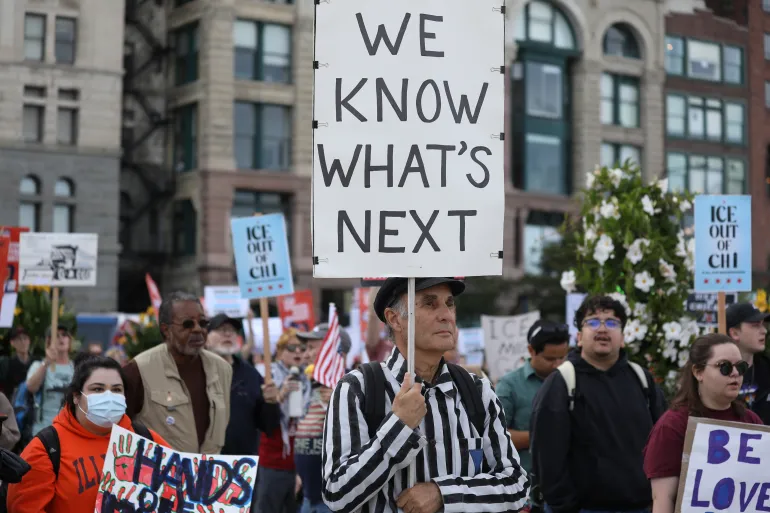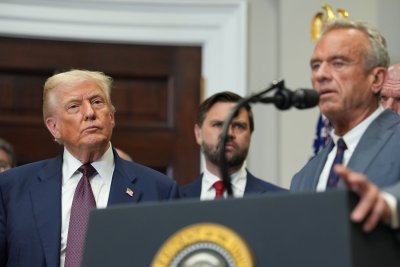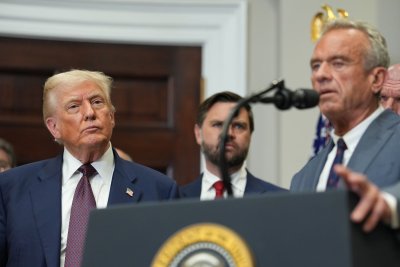Trump authorises National Guard deployment to Chicago despite objections | Donald Trump News
United States President Donald Trump has authorised the deployment of 300 National Guard troops to Chicago, issuing the order after weeks of threatening to do so over the objections of local leaders.
“President Trump has authorised 300 national guardsmen to protect federal officers and assets,” White House spokeswoman Abigail Jackson said on Saturday.
Recommended Stories
list of 3 itemsend of list
“President Trump will not turn a blind eye to the lawlessness plaguing American cities.”
Illinois Democratic Governor JB Pritzker announced Trump’s plan earlier Saturday after US Border Patrol personnel shot an armed woman in Chicago.
A Department of Homeland Security spokesperson said in a statement Saturday that no law enforcement officers were seriously injured in the incident in which a group, including the shot woman, rammed cars into vehicles used by the US Immigration and Customs Enforcement (ICE) agency.
The woman, a US citizen who was not identified, drove herself to the hospital, according to the statement. No additional information was immediately available about the woman’s condition. ICE agents fired pepper spray and loaded rubber bullets as part of heated clashes with protesters on Saturday.
US Secretary of Homeland Security Kristi Noem said in a post on X that she was sending additional “special operations” to control the scene in Chicago’s Brighton Park neighbourhood.

Pritzker said the guard received word from the Pentagon in the morning that the troops would be called up. He did not specify when or where they would be deployed, but Trump has long threatened to send troops to Chicago.
“This morning, the Trump Administration’s Department of War gave me an ultimatum: call up your troops, or we will,” Pritzker said in a statement. “It is absolutely outrageous and un-American to demand a Governor send military troops within our own borders and against our will.”
A spokesperson for the governor’s office said she could not provide additional details. The White House and the Pentagon did not respond to questions about Pritzker’s statement.
People in the Chicago area have staged repeated protests condemning the stepped-up federal presence. On Friday, police scuffled with hundreds of protesters outside an ICE facility in the Chicago suburb of Broadview.
On multiple occasions, demonstrators sitting on the ground attempting to block ICE vehicles from carrying detainees into the facility have been repelled by heavily armed ICE agents using physical force, chemical munitions and rubber bullets, evoking combat scenes.
Protesters have decried what they call similar heavy-handed policing in other Democratic-run cities, including New York, Los Angeles, Washington, DC, and Portland.
Trump deployed the National Guard to Los Angeles over the summer and as part of his law enforcement takeover in Washington, DC. Meanwhile, Tennessee National Guard troops are expected to help Memphis police.
California Governor Gavin Newsom sued to stop the deployment in Los Angeles and won a temporary block in federal court. The Trump administration has appealed the ruling that the use of the guard was illegal, and a three-judge panel of the 9th US Circuit Court of Appeals has indicated that it believes the government is likely to prevail.

Pritzker called Trump’s move in Illinois a “manufactured performance” that would pull the state’s National Guard troops away from their families and regular jobs.
“For Donald Trump, this has never been about safety. This is about control,” said the governor, who also noted that state, county and local law enforcement have been coordinating to ensure the safety of ICE’s Broadview facility on the outskirts of Chicago.
Federal officials reported the arrests of 13 people protesting on Friday near the facility, which has been frequently targeted during the administration’s surge in immigration enforcement this fall.
Judge blocks Portland deployment
A federal judge in Oregon has temporarily blocked Trump’s administration from deploying the National Guard in Portland.
Trump said last month that he was sending federal troops to Portland, Oregon, calling the city “war-ravaged”. But local officials have suggested that many of his claims and social media posts appear to rely on images from 2020, when demonstrations and unrest gripped the city following the killing of George Floyd by Minneapolis police.
US District Judge Karin Immergut issued the order Saturday in a lawsuit brought by the state and city.
The US Department of Defense had said it was placing 200 members of Oregon’s National Guard under federal control for 60 days to protect federal property at locations where protests are occurring or likely to occur after Trump called the city “war-ravaged.”
Oregon officials said that description was ludicrous. The US ICE building in the city has recently been the site of nightly protests, which typically drew a couple dozen people in recent weeks before the deployment was announced.




